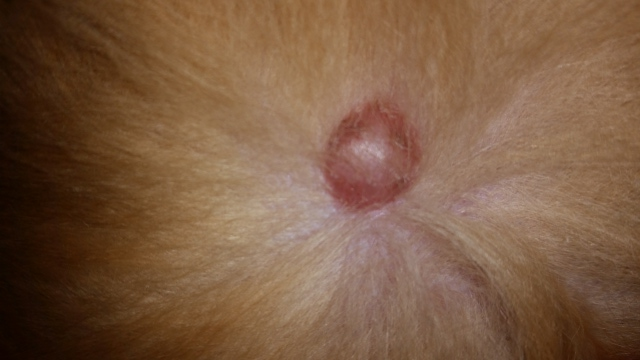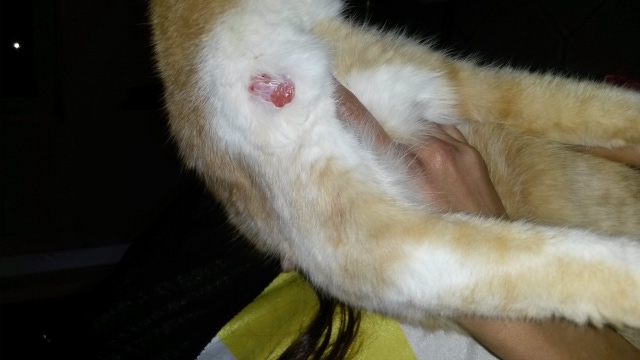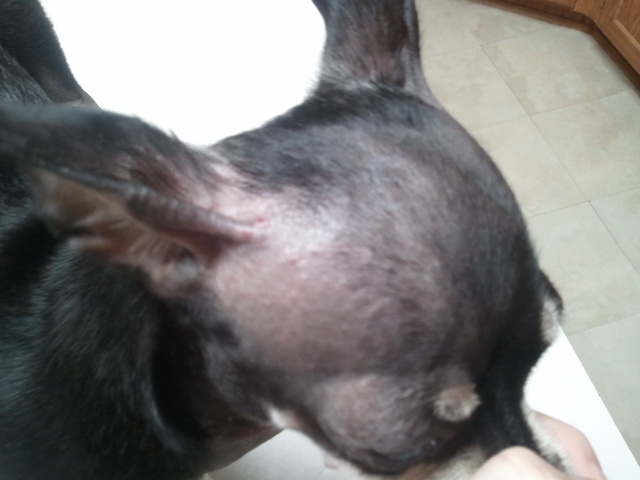QuestionMy brother gave us his 7 year old Shepherd female when he had to relocate. We live out in the country and have a large pen that wasn't being used at the time, and we love dogs, so we were glad to take her . He had been told a few years previously that she was heartworm positive but she has never been treated. She's a sweetheart but we already had one dog in the house, a small terrier who is dog-aggressive, so she has continued to be an outside dog but she has good shelter and seems happy. We think she may be pregnant (for the first time) and we are worried. We know that she can't pass the heartworms to her pups before birth or thru her milk, but what should we be watching for as far as she is concerned? What kind of symptoms would she have if this were to give her problems?
AnswerSeven years old is a little too old for a shep to be having puppies. The stress of the heartworm infection on top of pregnancy very well could kill her. Your best bet is to take her to the vet for a checkup, another heartworm test and some chest x-rays. Knowing how bad the heartworm infection is will allow you to better understand her prognosis. After she has the pups, get her treated for heartworm, get on her Heartworm Prevention and then get her spayed to prevent future problems.
Here is more info on heartworm disease....
Dirofilaria immitis= Heartworm disease
AffectedAnimals:
Dogs and cats. Dogs that live outside have an increased risk for developing a heartworm infection. Felines get this infection less commonly than canines.
Overview:
A parasite that can infect the heart and lungs, heartworms pose a very serious threat to both indoor and outdoor dogs. Adult heartworms cause disease because they live in the right side of the heart and pulmonary arteries where they obstruct the flow of blood through the heart and to the rest of the body. Because heartworms can cause serious, fatal diseases, prevention and treatment of infected dogs are critical.
Transmitted to dogs by mosquitoes that have fed off an animal that has heartworm disease, the Dirofilaria immitis larvae migrate through the body tissues until they enter the vascular system. Within the bloodstream, they circulate and travel to the right side of the heart and pulmonary arteries. Here, they mature into the adult stage. The complete maturation of the heartworms, from larvae to adulthood, takes five to seven months. Dirofilaria immitis parasites can live for up to five years. Adult heartworms can grow to be as long as 14 inches and up to 100 or more can be living at one time.
Treatment is usually through medication and often is effective, but dogs with serious complications of the heart and lungs due to heartworm have a much more guarded prognosis for recovery.
Clinical Signs:
Coughing from the lung damage, jaundice from liver damage, and weakness from damage to other organs may develop. Clinical signs include coughing, exercise intolerance, weakness, difficulty breathing, and fainting following exercise, if the dog is able to exercise at all. Eventually, congestive heart failure can develop, resulting in the backup of fluid within the abdomen and under the skin of the rear legs. In severe cases, sudden death can occur following exercise.
Symptoms:
See clinical signs.
Description:
A serious threat to both indoor and outdoor dogs, heartworm is a disease caused by a worm called Dirofilaria immitis. The parasite is transmitted to dogs by mosquitoes carrying immature heartworms that they get from biting animals infected by the parasite. The immature worms circulate in the bloodstream and then migrate to the right side of the heart and pulmonary arteries where they mature and can live as adults for up to five years. Adult heartworms can grow to be as long as 14 inches and up to 100 or more worms can be living at one time. Heartworms cause serious and sometimes fatal diseases, so prevention and treatment of infected dogs is critical.
Diagnosis:
Diagnosis of heartworms is done by examining under the microscope a sample of the dog's blood for heartworm offspring, called microfilaria. Another blood test looks for the adults by detecting antigens made by the female adult heartworm. However, this antigen test can be falsely negative if there are too few heartworms and thus not enough antigen is made to be detected, or if there are only male heartworms present.
Another useful diagnostic test, a chest x-ray, determines the severity of the illness and will show changes that reflect heartworm disease such as heart enlargement, pulmonary artery enlargement, as well any lung changes. A urinalysis may reveal any damage that has been done to the kidneys. Blood work can indicate if the dog is anemic from the disease, and it will help determine the overall health of the animal.
Prognosis:
The prognosis for animals that have mild or no clinical signs of disease is good. The prognosis in animals with severe infection and severe clinical signs is guarded because the risk of complications is great.
Transmission or Cause:
Dogs get heartworms from a mosquito that transmits the infective larvae from another animal with the disease; the mosquito obtains this microfilaria through biting. While in the mosquito, the heartworm larvae mature into the infective stage of their lifecycle. Next, the mosquito bites another dog, and in the process, passes on the infective heartworm larvae to that dog. In the newly infected dog, the heartworm larvae will continue to develop over the course of five to seven months. The larvae will gain access to the vascular system, develop into adult heartworms, and migrate to the heart and pulmonary arteries to live. It is here that the female heartworms produce many microfilaria, which circulate in the dog's bloodstream and can be picked up by another mosquito.
Treatment:
Treatment of heartworms is still somewhat risky, but it is much safer today than it was years ago, when treatment involved the use of a medication containing arsenic which had many severe side effects, including liver failure and death. Now there is a much safer medicine, melarsomine dihydrochloride, which kills adult and immature heartworms and does not have as many side effects as the previous medicine. However, there is still some risk involved: lethargy, lack of appetite, saliva, increased heart rate, and retching can occur with this new drug.
Before determining the treatment plan, the veterinarian first will perform a variety of tests to determine the severity of the disease, including x-rays, bloodwork, and a urinalysis. Sometimes, an electrocardiogram and an echocardiogram are recommended to assess more accurately the condition of the heart.
Generally, the melarsomine dihydrochloride will be administered as two deep muscle injections, given 24 hours apart. The dog is kept hospitalized and monitored closely for any reactions. If the disease is staged as severe, however, the veterinarian will alter the treatment plan to minimize the potential side effects. Three to four weeks after the injections are given, a medication will be administered to kill the circulating microfilaria. The dog must rest during this entire period to prevent adverse effects from occurring. No running, jumping, or excessive stair climbing should be allowed. Owners should walk their dogs slowly on a leash.
Prevention:
Prescription heartworm preventive medications that are properly administered are nearly 100 percent effective in preventing heartworm disease. Many preventives also will fight against gastrointestinal parasite infections.

 Dog daily Exercise
Question
Dollar male lab
Question : Shown below
Dog daily Exercise
Question
Dollar male lab
Question : Shown below
 Soft pink blister looking on dogs side
Question
Blister on Golden Retr
I noticed a smal
Soft pink blister looking on dogs side
Question
Blister on Golden Retr
I noticed a smal
 Cat with bump on neck/ shoulder
Question
Wound
Hi, I have a 20 year old female
Cat with bump on neck/ shoulder
Question
Wound
Hi, I have a 20 year old female
 quries abut my pug
Question
image645.jpg"
my pug puppy name to
quries abut my pug
Question
image645.jpg"
my pug puppy name to
 is it normal or is it mange?
Question
nemos skin
My 7 month old Chihuahua puppy, Nem
is it normal or is it mange?
Question
nemos skin
My 7 month old Chihuahua puppy, Nem